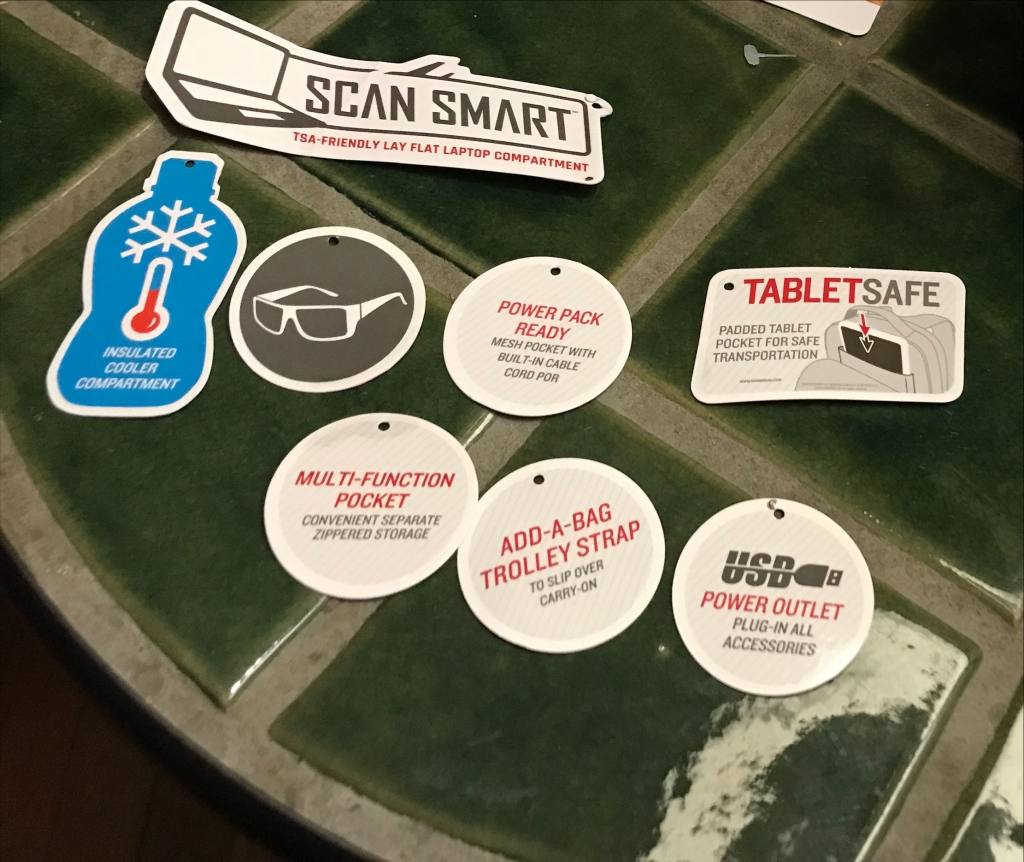When you cut the tags off of new clothes, you sometimes have to cut those tiny tag fasteners that look like this:

They’re a pain to cut off. You have to be precise with your scissors or knife because you don’t want to cut the garment. Or yourself. I speak from experience here.
So I was annoyed when I opened the Amazon box with my new Swiss Gear laptop and saw it covered in tags like it caught a case of chicken pox. But after carefully cutting off each one, my opinion has changed.
What they did was brilliant. Here’s why.
As I carefully cut each tag, I observed that each tag “showed” me, in place, another feature of the bag: a hard-shell sunglasses compartment; a pocket for tablets; a phone charger connector, etc. Each tag had an icon on one side and an explanation of the feature on the other. I couldn’t help but check out each feature before cutting off the tag. And the backpack had a lot of cool features.

People who take the time to really learn a product’s features will probably have a better user experience (i.e. be happier) with the product. And: few people actually do this. With software, we address this by trying to make our features easily discoverable or obvious. But as the complexity of the job increases, discoverability becomes more difficult to achieve.
This discoverability issue is probably what the team at Swiss Gear had in mind when they made the decision to go tag-drunk. They designed a set of cool features that would lead to happier customers if only the customers would only discover said features.
The downside was making people perform minor surgery to make the laptop look like it was purchased and not shoplifted. Yes, you’ll probably be annoyed, but who stays angry because their new backpack was a pain to de-tagify?
I think the trade-off was worth it.
If you are curious, the backpacked I purchased was a SwissGear 5358 USB ScanSmart Laptop Backpack, Blue/Black, Large.
